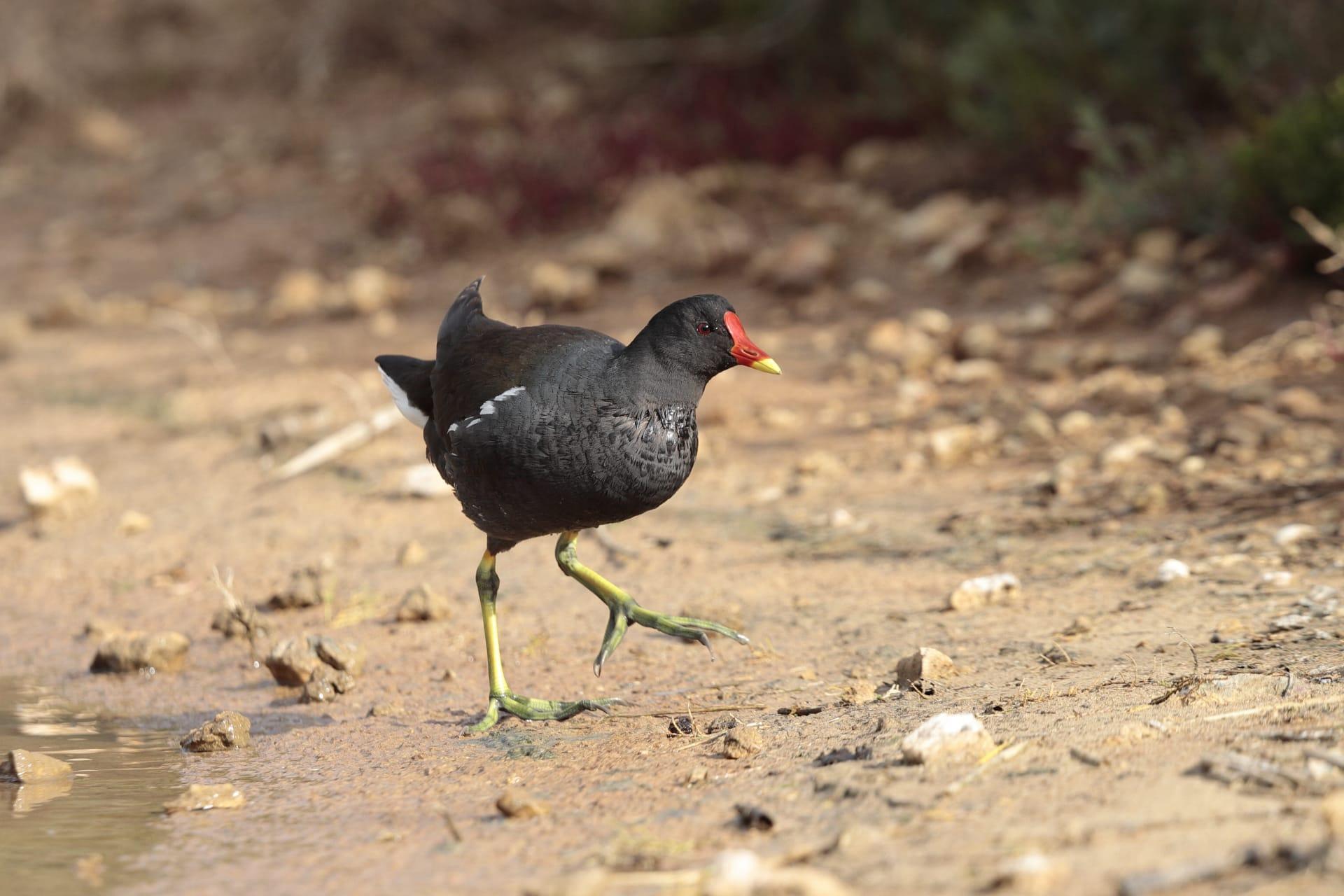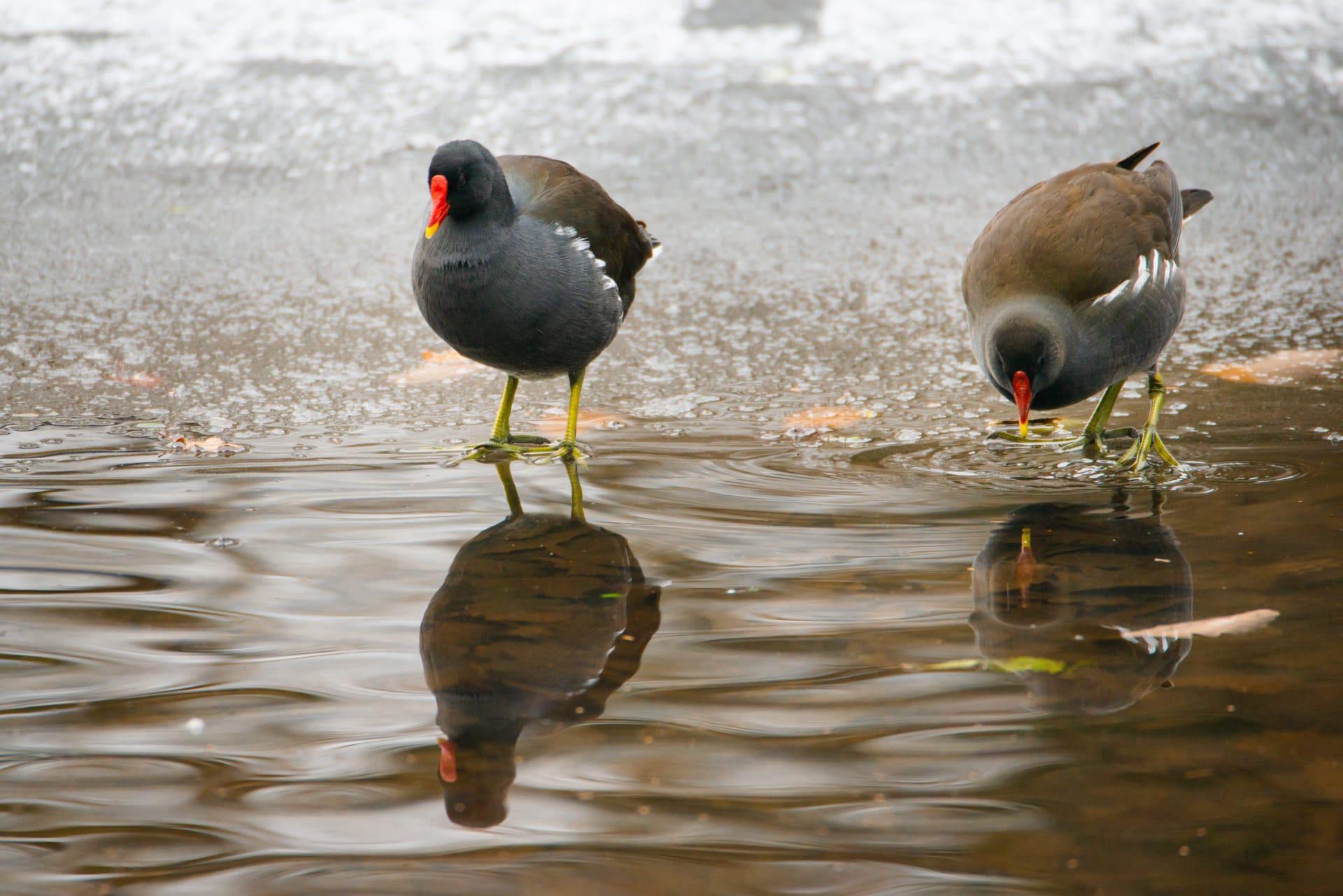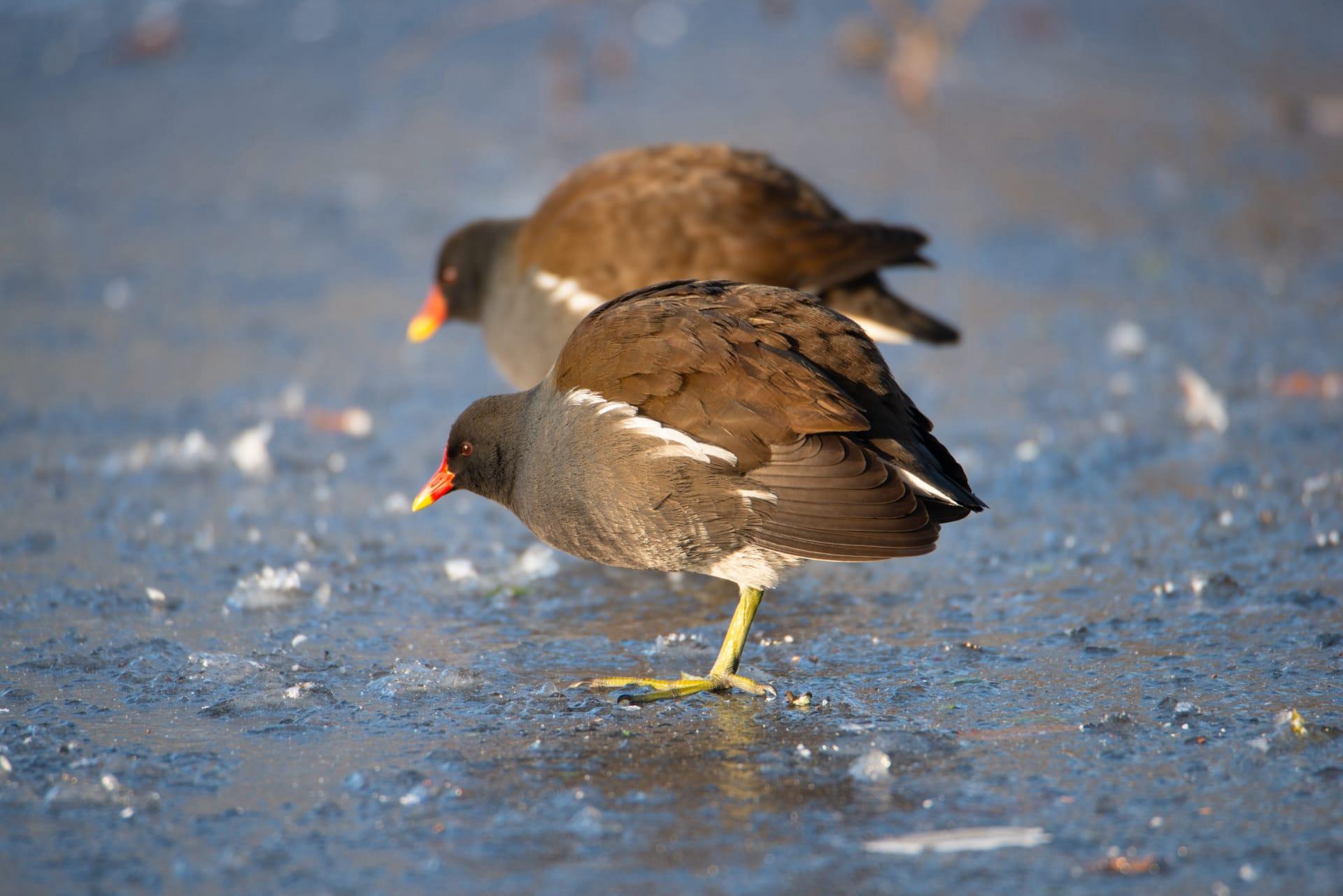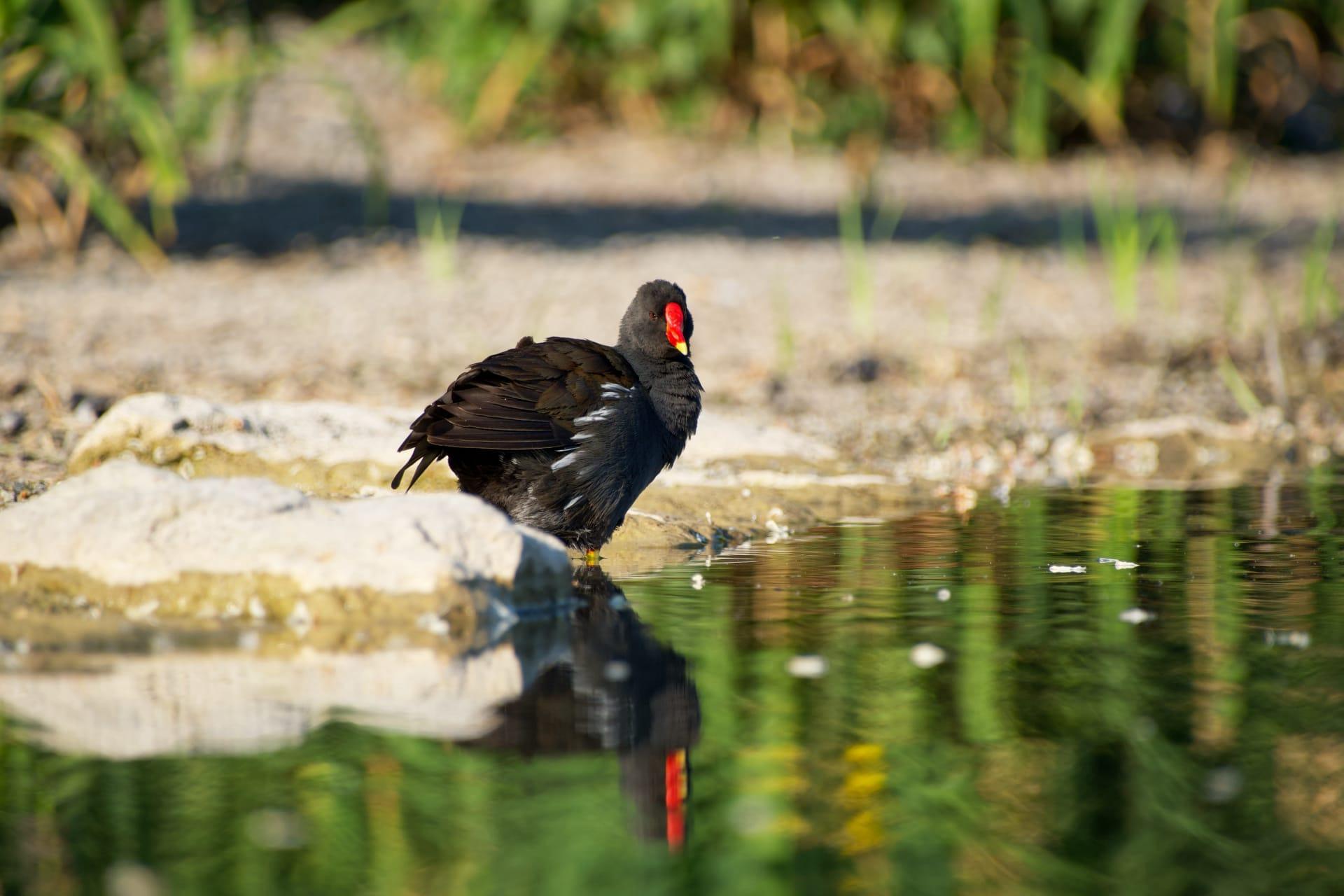1
Moorhens, known scientifically as Gallinula chloropus, are fascinating birds often found gliding across ponds and marshes. One intriguing fact about these birds is their feet. Unlike ducks, moorhens don't have webbed feet. Instead, they have long, slender toes that spread wide, allowing them to walk on soft mud and floating vegetation. This adaptation is crucial for their habitat, which often includes swampy, unstable ground. The length of their toes can reach up to 6.5 centimeters, which is quite significant considering their body size.
Another captivating aspect of moorhens is their nesting behavior. They are known for building floating nests. These nests are not just simple structures; moorhens meticulously weave them from reeds and plant material, ensuring they are anchored to underwater plants. This floating design protects their eggs from aquatic predators and fluctuating water levels. Typically, a moorhen's nest is about 30 to 40 centimeters in diameter and can house an average of 5 to 8 eggs.

2
Moorhens exhibit a unique survival tactic: they are both adept swimmers and fliers, but they often choose to escape predators by running across the water's surface. This behavior, known as 'Jesus running,' allows them to quickly evade threats without needing to take flight, which can be more energy-intensive. Their strong legs and elongated toes enable this rapid skimming across water, combining both paddling and stepping movements.
When it comes to vocalizations, moorhens have a distinct and varied repertoire. They use a range of sounds to communicate, from loud, repetitive cackling calls to softer, more subtle clucks and whistles. These vocalizations play a crucial role in their social interactions, especially during mating season. The male moorhen often uses a loud, persistent call to attract females and to ward off rival males, while softer sounds are typically used for communication between mates and their young.

3
Coloration plays a significant role in the life of a moorhen. Young moorhens, or juveniles, exhibit a striking difference in plumage compared to adults. Juveniles have a brownish body with a white throat and belly, which gradually changes to the adult's more familiar blackish-green color with a distinctive red frontal shield on their forehead. This transition in coloration is not just for aesthetics; it signals maturity and readiness for breeding.
Moorhens are highly territorial during the breeding season. They engage in aggressive behaviors to defend their territory, which can include physical confrontations. These confrontations are not mere posturing; moorhens use their sharp claws and beaks as weapons. Territorial disputes are often accompanied by loud calls and display flights, where the bird flies a short distance with exaggerated wingbeats to demonstrate strength and dominance.

4
Diet-wise, moorhens are omnivorous, feeding on a diverse range of food items. Their diet includes plant material like seeds and fruits, as well as small aquatic creatures like insects, snails, and even small fish. This varied diet is essential for their survival in different environments, allowing them to adapt to available food sources in both urban and wild habitats. The flexibility in their diet also helps them during different seasons when certain food items might be scarce.
Another interesting aspect of moorhens is their adaptability to urban environments. They are often seen in city parks and ponds, coexisting with human activities. This adaptability is a testament to their survival skills, as they can navigate both natural and man-made habitats effectively. Moorhens can even recognize and respond to human-provided food sources, often seen scavenging near park visitors.

5
Moorhens have a unique way of caring for their young. Unlike many bird species, both the male and female moorhens share parenting responsibilities. They take turns incubating the eggs, which lasts about 19 to 22 days. After hatching, both parents are involved in feeding and protecting the chicks. This cooperative parenting strategy enhances the survival chances of their offspring.
Moorhens play a crucial role in their ecosystem. They help control the population of insects and aquatic invertebrates, contributing to the balance of their habitat. Additionally, their feeding habits aid in seed dispersal for various plant species, promoting biodiversity in their environment. Moorhens, therefore, are not just interesting birds to observe but also vital contributors to the health of wetland ecosystems.